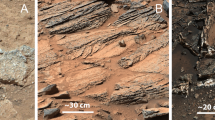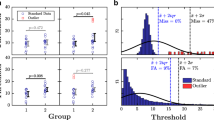Abstract
In this paper, we quantify the effect of random noise on the probability of misclassification of images produced by multi-spacecraft interferometric imaging systems (MSIIS). We consider two metrics for the noise corrupting the image: the mean squared error (MSE) and the worst-case error (WCE). We show that these are consistent with the goal of image classification in that, as the MSE or WCE tends to zero, the probability of misclassifying an image also tends to zero. Given a feature map, i.e., a real-valued function of an image variable, we assume that classification is done by applying a threshold to the feature map. In this feature-based classification, we find bounds on the MSE and the WCE such that the probability of misclassifying the image is guaranteed to be less than some pre-specified value. We illustrate the theory through an example where the banded appearance of the image of a planet is detected. The results of this paper could be used for the reliable characterization of exo-solar planets and similar astronomical studies.
Similar content being viewed by others
References
QUIRRENBACH, A. “Optical Inteferometry,” Annual Review in Astronomy and Astrophysics, Vol. 39, 2001, pp. 353–401.
BORUCKI, W. J., KOCH, D. G., DUNHAM, E. W., and JENKINS, J. M. “The Kepler Mission: A Mission to Determine the Frequency of Inner Planets Near the Habitable Zone of a Wide Range of Stars,” presented at Planets Beyond our Solar System and Next Generation Space Missions, ASP conference series, Oct. 16–18, 1996.
CHAKRAVORTY, S. Design and Control of Multi-Spacecaft Interferometric Imaging Systems, Ph.D. Dissertation, The University of Michigan, Ann Arbor, MI, 2004.
GOODMAN, J. W. Introduction to Fourier Optics, McGraw Hill, Boston, MA, 1996.
FITCH, J. P. Synthetic Aperture Radar, Springer-Verlag, Berlin, 1987.
HALE, D. D. S., et. al. “The Berkeley Infrared Spatial Interferometer: A Heterodyne Stellar Interferometer for the Mid-IR,” The Astrophysical Journal, Vol. 537, 2000, pp. 998–1012.
BRECKENRIDGE, J. B. (ed.) “Amplitude and Intensity Spatial Interferometry II,” Proceedings SPIE, Vol. 2200, 1994.
CORNWELL, T. J. “A Novel Principle for Optimization of the Instant Fourier Plane Coverage of Correlation Arrays,” IEEE Transactions on Antennas and Propagation, Vol. 36, No. 8, Aug. 1988, pp. 1165–1167.
GOLAY, M. J. E. “Point Arrays Having Compact Non-Redundant Autocorrelations,” Journal of the Optical Society of America, Vol. 61, 1971.
MOFFET, A. T. “Minimum Redundancy Linear Arrays,” IEEE Transactions on Antennas and Propagation, AP-16, 1968, pp. 172–175.
SHACK, R. V., RANCOURT, J. D., and MORROW, H. “Effects of Dilution on a Six-Element Synthetic Aperture,” Applied Optics, Vol. 10, 1971, pp. 257–259.
MEINEL, A. B., MEINEL, M. P., and WOOLF, N. J. “Multiple Aperture Telescope Diffraction Images,” Applied Optics and Optical Engineering, Vol. 9, Chapter 5, pp. 149–201.
HARVEY, J. E., WISSINGER, A. B., and BUNNER, A. N. “A Parametric Study of Various Synthetic Aperture Telescope Configurations for Coherent Imaging Applications,” Infrared, Adaptive, and Synthetic Aperture Optical Systems, Vol. 643, 1986, pp. 194–207.
WATSON, S. M. and MILLS, J. P. “Two-Point Resolution Criterion for Multi-Aperture Optical Telescopes,” Journal of the Optical Society of America A, Vol. 5, 1988, pp. 893–903.
ESO/VLT Interferometry Panel “The VLT Interferometer Implementation Plan,” VLT Report 59b, 1989.
LABYRIE, A., LEMAITRE, G., and KOECHLIN, L. “The Optical Very Large Array,” Advanced Technology Optical Telescopes, Vol. 628, 1986, 323–332.
HARVEY, J. E. and ROCKWELL, R. A. “Performance Characteristics of Phased Arrays and Thinned Aperture Optical Telescopes,” Optical Engineering, Vol. 27, 1988, pp. 762–768.
FAUCHERRE, M., MERKLE, F., and VAKILI, F. “Beam Combination in Aperture Synthesis from Space: Field of View Limitations abd (u, v) Plane Coverage Optimization,” New Technologies for Astronomy, Vol. 1130, 1989, pp. 138–145.
FITCH, J. P. and LAWRENCE, T. W “Placement of Multiple Apertures for Imaging Technologies,” Amplitude and Spatial Interferometry, Vol. 1237, 1990, pp. 61–69.
DAME, L. and GUYENNE, T. D. “Study of an Optimized Configuration for Interferometric Imaging of Complex and Extended Solar Structures,” Targets for Space Based Interferometry, Vol. SP-354, 1992, 201–208.
MUGNIER, L. M., ROUSSET, G., and CASSAING, F. “Aperture Configuration Optimality Criterion for Phased Array of Optical Telescopes,” Journal of the Optical Society of America, Vol. 13, No. 12, 1996, pp. 2367–2374.
MUGNIER, L. M., ROUSSET, G., and CASSAING, F. “Pupil Configuration Optimality Criterion in Synthetic Aperture Optics,” Proceedings SPIE in Spaceborne Interferometry II. Vol. 2477, 1995, pp. 124–131.
CASSAING, F., MUGNIER, L. M., ROUSSET, G., and SORRENTE, B. “Key Aspects in the Design of a Synthetic Aperture Optics Space Telescope for Wide Field Imaging,” Adaptive Optics and Interferometry in the 21st Century, Astronomical Society of the Pacific Conference Series, Vol. 174, 1999, pp. 245–249.
LEHMANN, E. L. Testing Statistical Hypotheses, Wiley, New York, 1959.
THEODORIDIS, S. Pattern Recognition, Academic Press, San Diego, 1999.
KASSAM, S. and POOR, H. “Robust Techniques for Signal Processing: A Survey,” Proceedings of the IEEE, Vol. 73, No. 3, Mar. 1985, pp. 433–481.
MARTIN, R. and SCHWARTZ, S. “Robust Detection of a Known Signal in Nearly Gaussian Noise,” IEEE Transactions on Information Theory, IT-17, 1971, pp. 50–56.
WILLETT, P. and CHEN, B. “Robust Detection of Small Stochastic Signals,” IEEE Transactions on Aerospace and Electronic Systems, Vol. 35, No. 1, Jan. 1999, pp. 15–30.
ANDREWS, H. C. and HUNT, B. R. Digital Image Restoration, Prentice-Hall, Englewood Cliffs, NJ, 1997.
DEMOMENT, G. “Image Reconstruction and Restoration: Overview of Common Estimation Structures and Problems,” IEEE Transactions on Acoustics, Speech, and Signal Processing, Vol. 37, 1989, pp. 2024–2036.
KATSAGELLOS, A. K. (ed.) Digital Image Restoration, Springer-Verlag, New York, 1991.
KATSAGELLOS, A. K. Iterative Image Restoration Algorithms,” Optical Engineering, Vol. 28, No. 7, 1989, pp. 735–748.
KUNDUR, D. and HATZINAKOS, D. “A Novel Blind Deconvolution Scheme for Image Restoration Using Recursive Filtering,” IEEE Transactions on Signal Processing, Vol. 46, No. 2, Feb. 1998.
CANNON, M. Blind Deconvolution of Spatially Invariant Image Blurs with Phase,” IEEE Transactions on Acoustics, Speech, and Signal Processing, Vol. 24, Feb. 1976, pp. 58–63.
GOODMAN, J. W. Introduction to Fourier Optics, 2nd edition, McGraw Hill, New York, 1996.
KALLENBERG, O. Foundations of Modern Probability Theory, Springer, New York, NY, 1997.
STARK, H. and WOODS, J. W. Probability, Random Processes and Estimation Theory for Engineers, Prentice Hall, Englewood Cliffs, NJ, 1986.
LOEVE, M. Probability Theory, 3rd edition, D. Van Nostrand and Company, Princeton, NJ, 1962.
LUENBERGER, D. G. Optimization by Vector Space Methods, Wiley, New York, 1968.
KHALIL, H. K. Nonlinear Systems, Second Edition, Prentice Hall, NJ, 1996.
ANDERSON, T. W and BURSTEIN, H. “Approximating the Upper Binomial Confidence Limit,” Journal of the American Statistical Association, Vol. 62, Issue 319, 1967, pp. 857–861.
ANDERSON, T. W and BURSTEIN, H. “Approximating the Lower Binomial Confidence Limit,” Journal of the American Statistical Association, Vol. 63, Issue 324, 1968, pp. 1413–1415.
LUENBERGER, D. G. Linear and Nonlinear Programming, Addison-Wesley, Reading, MA, 1984.
MATHAI, A. M. and PROVOST, S. B. Quadratic Forms in Random Variables, Marcel Dekker, New York, NY, 1992.
Author information
Authors and Affiliations
Corresponding author
Additional information
This work was supported by NASA under grant NAG5-10336. An earlier version of this paper was presented at the AIAA/AAS Space Flight Mechanics Conference, Ponce, Puerto Rico, February 9–12, 2003.
Rights and permissions
About this article
Cite this article
Chakravorty, S., Kabamba, P.T. & Hyland, D.C. Guaranteed Classification Performance of Multi-Spacecraft Interferometric Imaging Systems. J of Astronaut Sci 51, 205–226 (2003). https://doi.org/10.1007/BF03546309
Published:
Issue Date:
DOI: https://doi.org/10.1007/BF03546309




